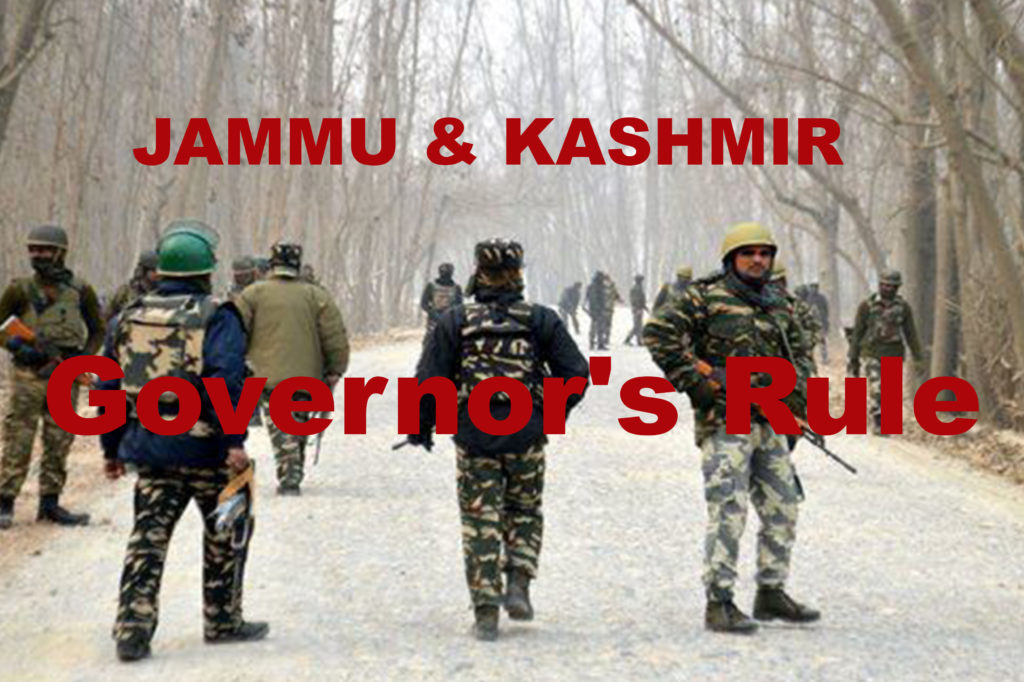Around 2 am on Friday, security forces began a cordon and search operation in Srigufwara village in the volatile Anantnag district. At 6 am, they zeroed in on a house where four militants believed to be working with the local unit of the Islamic State were trapped, after which an encounter started.
Jammu and Kashmir Police officials say, four militants, a civilian and a policeman were killed. They stated that among the four militants killed, two were locals. Further, the wife of the civilian who died also sustained a bullet injury. This happened on the third day of Governor’s Rule in the state, which was introduced after the BJP pulled out of a coalition government with the PDP.
The suspension of anti-terror operations during the month of Ramzan had led to a brief respite from violence. With the policy coming to an end, such scenes of bloodshed may occur repeatedly in Kashmir in the coming days, as forces intensify search operations aimed at killing militants and ‘wiping out militancy’ from the region.


Residents of Srigufwara village alleged on Friday that security forces did not evacuate the occupants of the house where the militants were hiding. According to them, this led to the death of the owner of the house (Muhammad Yousuf Rather) and caused injuries to his wife (Hafeez). As per the standard operating procedure, forces have to evacuate the civilian population before launching an assault on militants. Mushtaq Ahmad Balla, a resident of Nowshera-Nowpora area in Srigufwara village, told Firstpost, “The place where the firing took place is a cluster of houses. We still don’t know how he (Rather) died. There is smoke rising from the houses.”
Subsequently, news spread of the death of a civilian and injuries to dozens of people, with many of them suffering bullet wounds. Following this, hundreds of youth assembled near the encounter site, shouting pro-freedom and anti-government slogans and triggering massive clashes. Government forces retaliated through tear gas shells and pellets.
Mohammad Shafi, a medical officer at Bijbhera hospital, told Firstpost over the phone, “Out of the 13 injured people brought to this hospital, the majority had bullet injuries, while only two had pellet injuries. Most of the injuries caused by firearms were reported after a lady (Hafeeza) was brought to the hospital with a bullet injury to her hand.” Shafi said Hafeeza received a bullet injury on her right hand. He added a boy with head injuries was also brought to the hospital. While Rather was declared dead on arrival, Hafeeza was shifted to SKIMS Soura for specialised treatment.
“The encounter started early in the morning. We had information about the presence of three to four militants. The bodies of three militants have been retrieved, and one policeman was martyred. Two civilians were also injured, and one has succumbed to his injuries,” Director General of Police Shesh Paul Vaid said.
Tensions in the Valley are on the rise, with civilian killings taking place almost every day since the Union home ministry ended the unilateral suspension of anti-terror operations. The resumption of cordon and search operations by security forces is likely to provoke more anger on the streets, as happened in Srigufwara on Friday.
This year, till now, around 195 people — including 55 civilians, 92 militants and 48 police, army and paramilitary personnel — were killed. Pellets, which home minister Rajnath Singh had promised will be used in “rare” cases, have become a weapon of choice for forces.
Political observers fear more violence as the falling of the elected government in the state has given security forces leeway to take a far tougher stand then they did so far in tackling militancy. With the governor at the helm of affairs in the state now and complete backing from the Centre, it can only be expected that there may be a rise in encounters with terrorists and more instances of stone pelting.

